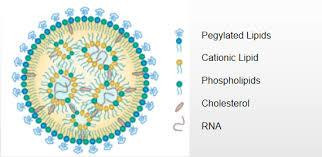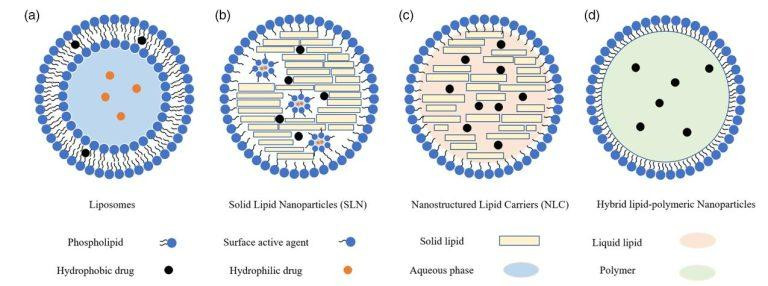Nano Synthetic Organisms
The Lipid Nanoparticles of mRNA Vaccines
are artificial life.
From Chuck Darling
November 15, 2024
What you see in the image above is
not a bacteria, or other cellular organism.
It is what BIG PHARMA calls a
"Lipid Nanoparticle"...
That's *NEWSPEAK for a
SYNTHETIC ORGANISM.
In the last twenty years, there has been a proliferation of LNPs, the most notable among which are solid lipid nanoparticles (SLNs), nanostructured lipid carriers (NLCs), lipid–drug conjugates (LDCs), and lipid nanocapsules (LNCs).
https://www.bocsci.com/blog/overview-of-lipid-nanoparticle/
Bacteriophages are viruses that
attack bacteria
Abstract
The human gut contains approximately 10^15 bacteriophages (the ‘phageome’), probably the richest concentration of biological entities on earth.
Mining and exploiting these potential ‘agents of change’ is an attractive prospect.
For many years, phages have been used to treat bacterial infections in humans and more recently have been approved to reduce pathogens in the food chain.
Phages have also been studied as
drug or vaccine delivery vectors to help treat and prevent diseases such as cancer and chronic neurodegenerative conditions. Individual phageomes vary depending on age and health, thus providing a useful biomarker of human health as well as suggesting potential interventions targeted at the gut microbiota.
https://www.ncbi.nlm.nih.gov/books/NBK493185/
How did COVID happen ? :
October 14, 2008
Here, we report the design, synthesis, and recovery of the largest synthetic replicating life form, a 29.7-kb bat severe acute respiratory syndrome (SARS)-like coronavirus (Bat-SCoV), a likely progenitor to the SARS-CoV epidemic.
Because Bat-SRBD grew equivalently to SARS-CoV in culture, we tested whether Bat-SRBD could replicate in primary HAEs, which recapitulate the epithelium of the human conducting airway.
Data Availability
Data deposition: The sequences reported in this paper have been deposited in the GenBank database (accession nos. FJ211859 and FJ211860).
Acknowledgments.
We thank XiaoTao Lu and Sunny Lee for technical assistance, Susan Burkett for maintenance of the HAE cultures, Perry Myrick for immunofluorescence assays, and the University of North Carolina Cystic Fibrosis Tissue Culture Core for HAE cells. M.M.B., R.L.G., R.S.B., and M.R.D. are supported by the National Institute of Allergy and Infectious Diseases Public Health Service Award P01 AI59943. Additional support was provided by Public Health Service Award CA68485 to the Vanderbilt University DNA Sequencing Shared Resource of the Vanderbilt–Ingram Cancer Center. The Baric laboratory is supported by the Gillings Innovation Fund.
- Dr Campbell interviews Dr Kelly
- RFK Appointed
[Chuck's 00Cedar JPICedar ]
[ This page built with JPICedar by Chuck Darling Friday 11-15-2024 Time : 9:29a]





